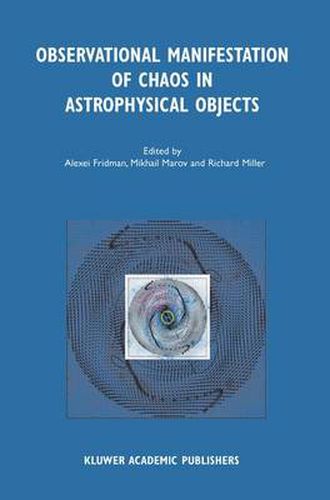Readings Newsletter
Become a Readings Member to make your shopping experience even easier.
Sign in or sign up for free!
You’re not far away from qualifying for FREE standard shipping within Australia
You’ve qualified for FREE standard shipping within Australia
The cart is loading…






This title is printed to order. This book may have been self-published. If so, we cannot guarantee the quality of the content. In the main most books will have gone through the editing process however some may not. We therefore suggest that you be aware of this before ordering this book. If in doubt check either the author or publisher’s details as we are unable to accept any returns unless they are faulty. Please contact us if you have any questions.
This work addresses a broad range of problems related to observed manifestations of chaotic motions in galactic and stellar objects, by invoking basic theory, numerical modelling, and observational evidence. Methods of stochastic dynamics are applied to actually observed astronomical objects, that is, the gaseous disc of the spiral galaxy NGC 3631. In the latter case, the existence of chaotic trajectories in the boundary of giant vortices was recently found by the calculation of the Lyapunov characteristic number of these trajectories. The reader will find research results on the peculiarities of chaotic system behaviour; a study of the integrals of motion in self-consistent systems; numerical modeling results of the evolution process of disk systems involving resonance excitation of the density waves in spiral galaxies; a review of specific formations in stars and high-energy sources demonstrating their stochastic nature; a discussion of the peculiarities of the precessional motion of the accretion disk and relativistic jets in the double system SS 433; and so forth. This book is unusual in that it deals with the problem of chaos in real astrophysical objects. It is intended for graduate and post-graduate students in the fields of non-linear dynamics, astrophysics, planetary and space physics; specifically for those dealing with computer modelling of the relevant processes.
$9.00 standard shipping within Australia
FREE standard shipping within Australia for orders over $100.00
Express & International shipping calculated at checkout
This title is printed to order. This book may have been self-published. If so, we cannot guarantee the quality of the content. In the main most books will have gone through the editing process however some may not. We therefore suggest that you be aware of this before ordering this book. If in doubt check either the author or publisher’s details as we are unable to accept any returns unless they are faulty. Please contact us if you have any questions.
This work addresses a broad range of problems related to observed manifestations of chaotic motions in galactic and stellar objects, by invoking basic theory, numerical modelling, and observational evidence. Methods of stochastic dynamics are applied to actually observed astronomical objects, that is, the gaseous disc of the spiral galaxy NGC 3631. In the latter case, the existence of chaotic trajectories in the boundary of giant vortices was recently found by the calculation of the Lyapunov characteristic number of these trajectories. The reader will find research results on the peculiarities of chaotic system behaviour; a study of the integrals of motion in self-consistent systems; numerical modeling results of the evolution process of disk systems involving resonance excitation of the density waves in spiral galaxies; a review of specific formations in stars and high-energy sources demonstrating their stochastic nature; a discussion of the peculiarities of the precessional motion of the accretion disk and relativistic jets in the double system SS 433; and so forth. This book is unusual in that it deals with the problem of chaos in real astrophysical objects. It is intended for graduate and post-graduate students in the fields of non-linear dynamics, astrophysics, planetary and space physics; specifically for those dealing with computer modelling of the relevant processes.